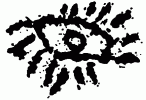| |
PEOPLE, CLIMATE, AND HISTORY
When we compare the historical geography that
emerges between the lines of biblical narration to the physical surroundings of
the mountain itself, we realise that Har Karkom may well be the mountain the
Bible calls Sinai. The archaeological testimony indicates that indeed this was
a paramount sacred mountain, and multitudes of people camped at its foot. Is it
possible to identify, among those tribes that left traces, the people and the
events described in the Bible?
Many queries remain regarding the role of
this mountain and its real or imaginary relation to the people of Moses. Among
all these questions the most problematic one is that concerning dating: our
discoveries indicate that Har Karkom was a sacred mountain from the fourth and
third millennia BC until the beginning of the second millennium BC. These
dates, however, far from correspond to those put forward by the traditional
exegesis for the period of the Exodus.
Archaeological research has shown that many
of the sites mentioned in the biblical narrative of Exodus and Joshua, such as
Jericho and Ai, flourished in the third millennium BC. Destruction and
devastation took place towards the end of this millennium. Scholars have made
many attempts to make their discoveries coincide with conventional dates of the
Exodus, but if the identification of the archaeological sites is correct, not
one of these sites existed in the thirteenth century BC, nor for several
centuries before or after.
When archaeology found no traces of the late
Bronze Age at Jericho, instead of claiming that the date they were searching
for was not correct some researchers claimed that the biblical Jericho could
not be there; others concluded that Joshua's conquest was just a fairy tale.
When excavations failed to find remains of the late Bronze Age at Ai, the same
explanations were advanced. Extensive archaeological excavations showed that
Arad was a strongly fortified city in the early Bronze Age, but in the late
Bronze Age it did not exist. At Ein-Kudeirat (Kadesh-barnea) traces of early
Bronze and beginning of the middle Bronze Age camping sites are similar to
those of Har Karkom, but there are no remains from the late Bronze Age.
|



